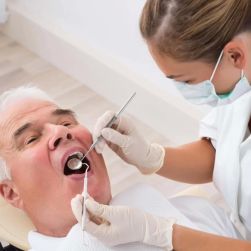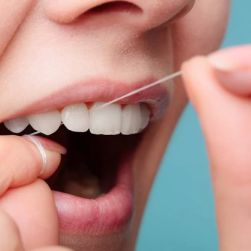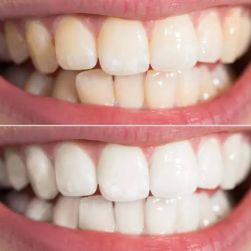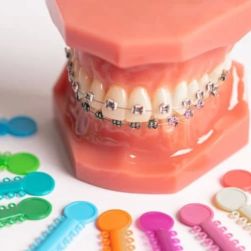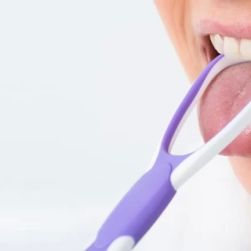Exploring the Best Dental Treatment Options for Gum Recession
Gum recession is a common dental concern, often going unnoticed until it becomes a significant problem. As someone who has struggled with gum recession, I can personally attest to how unsettling it can be when your gums start pulling away from your teeth. This not only affects your smile but also exposes the sensitive roots of your teeth, leading to discomfort and potential complications. In this article, we’ll dive into the best treatment options for gum recession, including preventive measures, non-surgical and surgical treatments, and personal experiences to guide you toward better gum health.
What Causes Gum Recession?
Before jumping into treatment options, it’s essential to understand what causes gum recession. The primary reason behind gum recession is periodontal disease, which occurs when plaque and tartar build up along the gumline, leading to an infection that damages the gums. However, other factors also play a role, such as:
- Poor Oral Hygiene: Not brushing or flossing regularly allows plaque to build up and eventually irritate the gums.
- Genetics: Some individuals are more prone to gum disease and recession due to their genetic makeup.
- Overbrushing: Brushing your teeth too hard or using a toothbrush with hard bristles can cause your gums to recede.
- Hormonal Changes: Conditions like pregnancy or menopause can make gums more vulnerable to recession.
- Tobacco Use: Smoking or chewing tobacco can increase the risk of gum recession by impairing the gums' ability to heal.
Non-Surgical Treatments for Gum Recession
If you catch gum recession early, there are several non-surgical treatments that can help manage and even reverse mild cases. Here’s a breakdown of some of the most common treatments I have experienced or learned about from my dentist:
1. Scaling and Root Planing
Scaling and root planing is a deep cleaning procedure designed to remove plaque and tartar buildup from below the gumline. The procedure is often recommended when the gums are infected but the recession is not yet severe. During this treatment, the dentist or hygienist will thoroughly clean the root surfaces, smoothing them to promote reattachment of the gums to the teeth. It’s a non-invasive option that can help reduce further gum damage.
2. Desensitizing Agents
If you experience discomfort from exposed tooth roots due to gum recession, desensitizing agents can help. These treatments are applied directly to the exposed root surface and reduce sensitivity. While this doesn't restore the gumline, it can make living with gum recession more manageable.
Surgical Options for Advanced Gum Recession
When gum recession becomes severe, surgical intervention may be necessary. I’ve come across patients, including myself, who benefited from these procedures. Here’s a closer look at the main surgical options:
1. Gum Grafting
Gum grafting is one of the most common surgical treatments for advanced gum recession. This procedure involves taking tissue from another part of your mouth (usually the palate) and grafting it onto the receded area. Over time, the grafted tissue will integrate with the surrounding gum tissue, covering the exposed tooth roots and helping restore a healthy gumline. I can personally vouch for how this procedure can dramatically improve both appearance and comfort.
2. Pinhole Surgical Technique
The pinhole surgical technique is a minimally invasive procedure that has gained popularity for treating gum recession. Instead of cutting and stitching, the periodontist makes a small hole in the gum tissue and then uses specialized instruments to gently reposition the gums over the exposed roots. This technique has a quicker recovery time compared to traditional gum grafting, and it’s less invasive. It was a game-changer for a close friend of mine who had severe gum recession in several areas.
3. Tissue Regeneration
In some cases, tissue regeneration can be an option to stimulate the growth of new gum tissue. This method involves applying a regenerative material to the exposed root, which helps the gums reattach. It’s an advanced option that may not be suitable for everyone but can be effective in specific cases.
Preventing Gum Recession
While treatments can help restore gum health, prevention is always better than cure. Here are a few things I’ve learned over the years to keep gum recession at bay:
- Brush Properly: Use a soft-bristled toothbrush and avoid brushing too aggressively. Gently brush your gums and teeth at a 45-degree angle.
- Floss Daily: Flossing removes plaque and food particles from between the teeth and along the gumline, preventing buildup.
- Visit Your Dentist Regularly: Regular check-ups and cleanings are crucial for detecting early signs of gum recession and preventing further damage.
- Quit Smoking: Smoking compromises gum health and makes you more susceptible to gum disease.
- Consider Your Bite: If you have an uneven bite, it can cause unnecessary pressure on certain areas of your gums. A dentist can recommend solutions like orthodontics or mouthguards.
Conclusion: The Importance of Professional Care
Whether you're experiencing mild gum recession or dealing with advanced cases, it’s vital to consult with a periodontist or dentist. From scaling and root planing to more advanced surgical techniques, there are numerous options available to restore your gums and protect your dental health. I personally know how transformative these treatments can be, and I encourage anyone experiencing gum recession to seek professional care as soon as possible.

